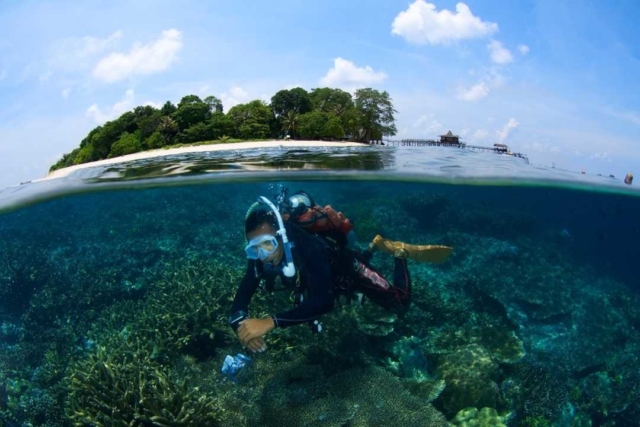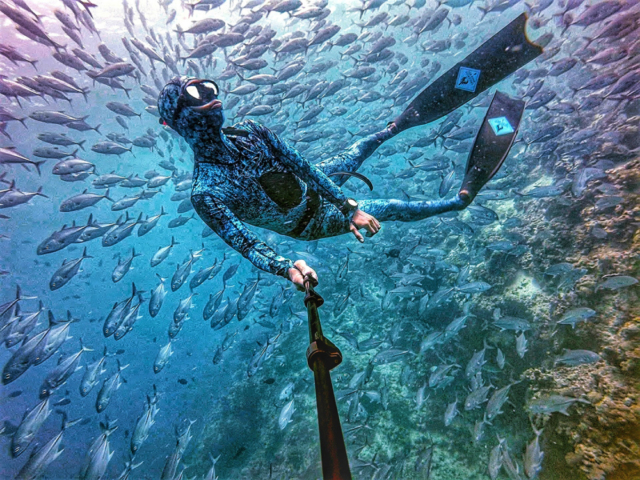“I have seen other places like Sipadan years ago. Now we have found again an untouched piece of art”. – Jacques-Yves Cousteau
Sipadan has appealed as one of the top dive sites in the world. It has been highly sought after by divers for its array of possible sightings. The mushroom like island (from a far off eye level view) offers 12 different dive points.
Some say that Barracuda Point is the best especially for the opportunity to be amidst a swirling vortex of barracuda. Other say, the Drop Off is even better in terms of experience which only requires a 9.14 metre walk on the beach before dropping off into the water, and to then go around the island wall which is 600m from the ocean floor.
Sipadan is well known for its unusually large numbers of green and hawksbill turtles which gather there to mate and nest and it is not unusual for a diver to see more than 20 turtles on each dive. More than 3000 species of fish and hundreds of coral species have been classified in this richest of ecosystems and thus made Sipadan an important marine habitat in this region.
Did you know that Sipadan’s popularity started off being a Bird Sanctuary? Migratory birds such as wood sandpiper can be sighted apart from the common sea eagles, kingfishers, sunbirds, starlings as well as megapodes.


Divers require a permit to dive in Sipadan and the quota is capped to 176 permits per day (156 dive permits, 20 snorkelling special permits); 3 dives per diver. Each permit is valid for 1 day only. Permits are to be attained from dive resorts. Kindly enquire directly with them if you wish to dive Sipadan.
Sipadan does not host any accommodation anymore. Divers will opt to stay at one of the nearby islands or at the Semporna mainland.
From December 2020 onwards, the Sipadan island will be closed to visitors every December to give a month-long recuperation period for the coral and marine life.